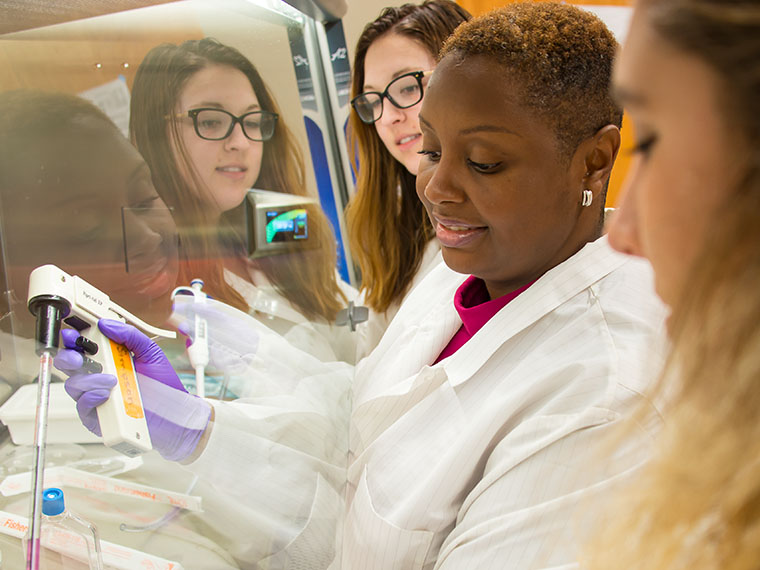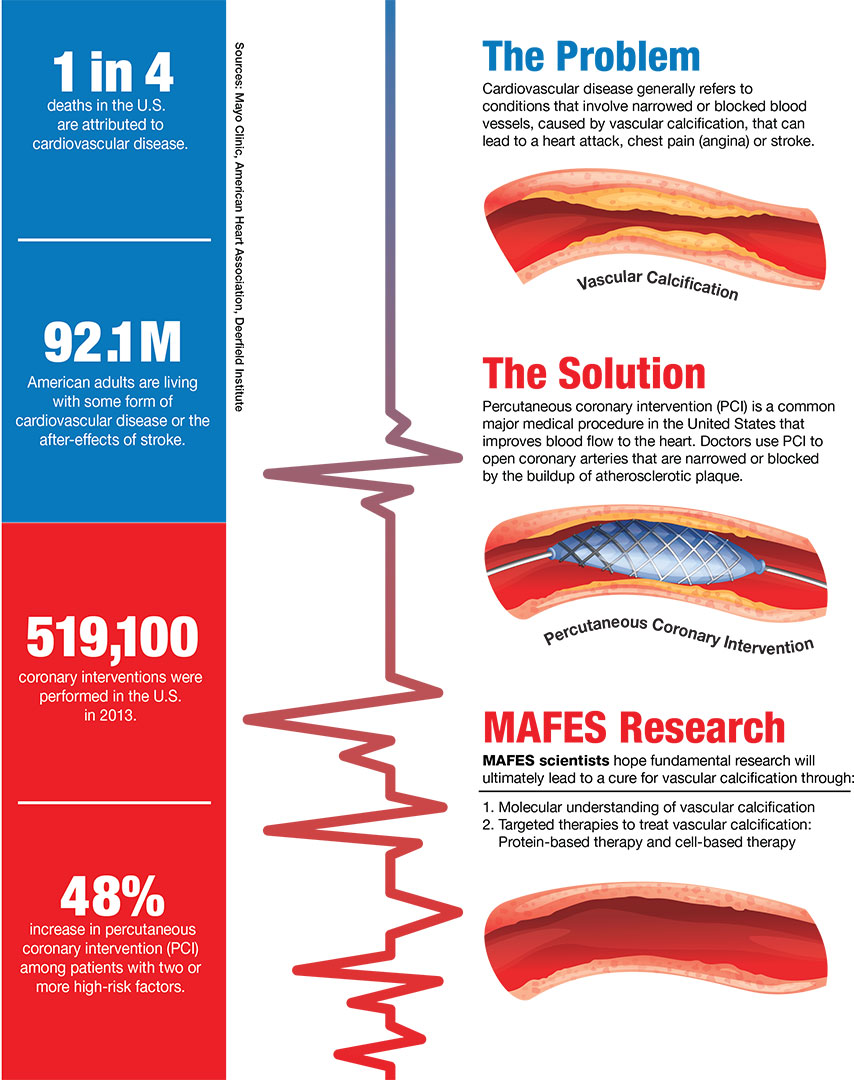A Clear Path
Biomedical engineers seek cure for vascular calcification
By: Vanessa Beeson
The information presented on this page may be dated. It may refer to situations which have changed or people who are no longer affiliated with the university. It is archived as part of Mississippi State University's history.
Cardiovascular disease is the cause of one in four deaths in the U.S. A major contributor to cardiovascular disease is vascular calcification, a build-up in the arteries that can result in heart attack or stroke. That's why biomedical engineers in the Mississippi Agricultural and Forestry Experiment Station are studying vascular calcification in hopes of finding a cure.
Dr. LaShan Simpson, assistant professor in agricultural and biological engineering, leads a team of graduate and undergraduate researchers focused on learning more about vascular calcification on the cellular level. She is specifically studying how vascular calcification affects individuals with diabetes and chronic kidney disease, who have an elevated risk of vascular calcification. More than 30 million people in the U.S. have diabetes, 36 percent of which have chronic kidney disease.
"In vascular calcification, the blood does not flow as easily through the arteries because of mineral buildup within the artery walls," Simpson said.
Simpson explained that on the cellular level, the calcification of arteries is similar to how bone forms.
"Smooth muscle cells line the artery and keep the blood flowing," Simpson said. "We are finding that in certain situations, like in elevated phosphate serum levels, these smooth muscle cells differentiate into an osteoblast-like bone cell, which then deposits a mineral substance within the artery," Simpson said.
In the lab, the scientists evaluated smooth muscle cells in a high phosphate environment because it mimicked the diseased blood serum in arteries of patients with diabetes and chronic kidney disease. They investigated the baseline that causes the smooth muscle cells to change in nature. They also hope to identify treatments to prevent the cells from making the behavioral switch.
"We were able to get the cells to act like they do in diseased conditions by adding high phosphate to the culture medium," she said.
Simpson found that smooth muscle cells under this condition expressed bone genes. They then evaluated two different proteins to use to inhibit the switch. Both proteins were able to block the cells from expressing the bone genes.
While the work is in the preliminary stages, Simpson hopes the research will eventually aid in the treatment of vascular calcification.
"Currently, blockage in the arteries caused by vascular calcification is treated with a stent. While the stent is effective in opening the path, calcification continues to develop. In our research, we are hoping to block the signaling pathways so the smooth muscle cells don't make the switch in the first place."
In her research, Simpson is also focused on training the biomedical engineers of tomorrow. Currently, she instructs one graduate student, four undergraduate researchers and one high school sophomore in her lab. Additionally, she has worked with several organizations to bring biomedical engineering into K-12 classrooms.
Kadie Parker, a senior biological engineering major from Laurel, Mississippi, is currently a researcher in the lab. In her project, she hones in on finding ways to measure the treatment efficacy of proteins in a laboratory setting. Parker has found the experience enriching.
"Dr. Simpson challenges us to think critically and analytically and has given us opportunities such as presenting at symposiums and preparing papers for publication. I am thankful for how she has mentored and challenged me. It's improved me academically and as an individual."
Parker went into biomedical engineering because she lost a sibling to a congenital heart condition.
"Three years ago, my three-month-old sister passed away. That's what inspired me to pursue medicine," Parker said. "When I discovered the biomedical engineering field, I knew it would be a platform to conduct research that would help people like my sister and others."
Parker said studying a treatment for vascular calcification, in particular, has been inspiring because it has the potential to impact so many lives.
"It's uplifting because we are progressing toward the goal of potentially helping people with this disease. It is hard work but gratifying. It will be nice to see our efforts pay off."
The research has been funded in part by a cross-college grant through the MSU Office of Research and Economic Development in collaboration with Dr. James A. Stewart, Jr., former biological sciences assistant professor. Funding has also been provided through the Mississippi Agricultural and Forestry Experiment Station Special Research Initiative grant and the College of Agriculture and Life Sciences Undergraduate Research Scholars Program. Simpson has also applied for grants with the National Institutes of Health, the National Science Foundation, and the American Heart Association.


